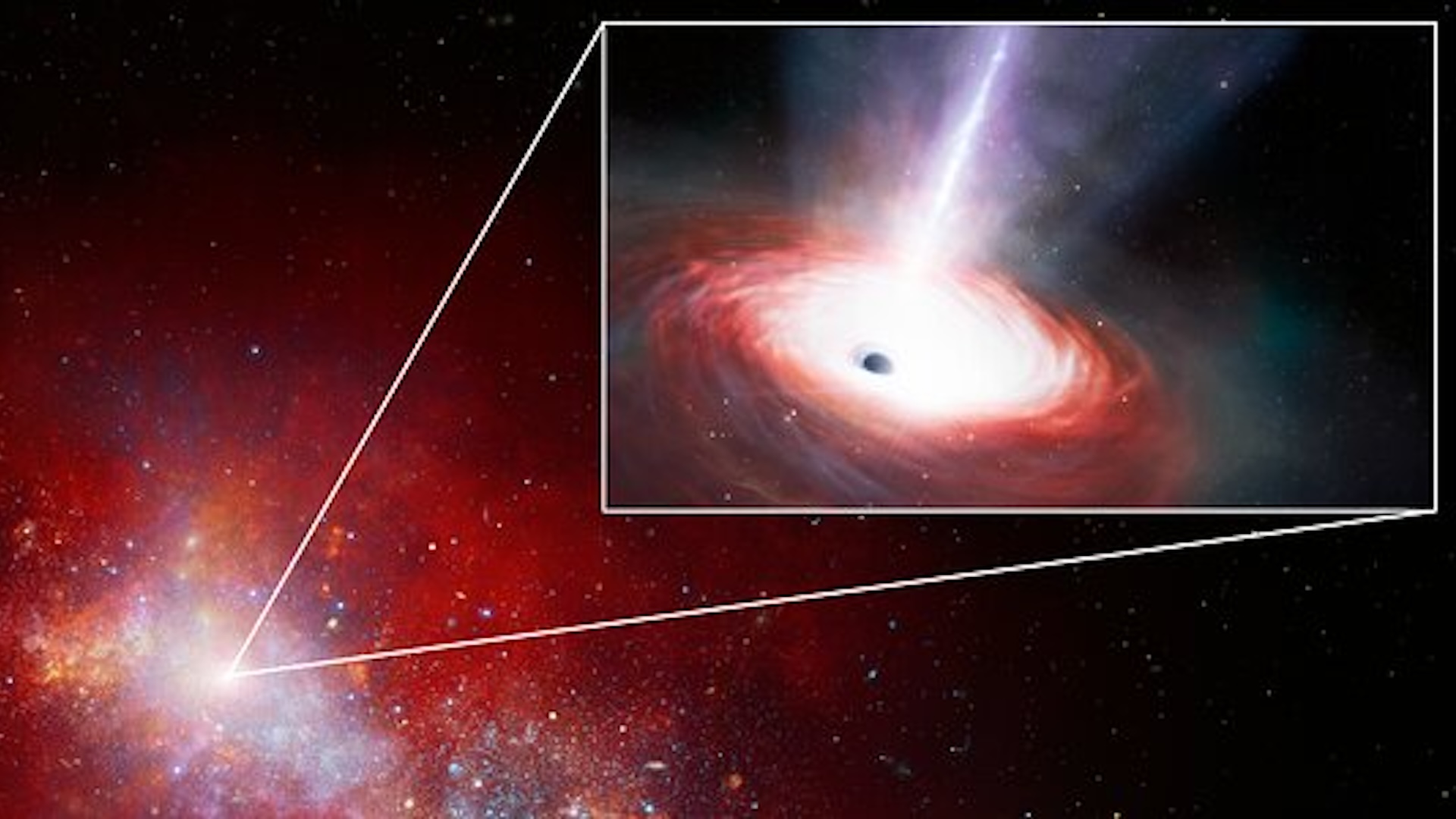
While peering into the early universe with the James Webb Space Telescope (JWST), astronomers keep finding monster black holes that seem to be growing too big, too fast for cosmological models to explain. Now, new observations of an exceptionally ravenous, rule-breaking object could help reveal why.
Using JWST to get a closer look at ancient galaxies known to host intense, X-ray emitting objects, researchers uncovered evidence of a supermassive black hole that appears to be gobbling up matter at more than 40 times its theoretical limit. Named LID-568 and observed just 1.5 billion years after the Big Bang, the object has been dubbed the fastest-feeding black hole in the early universe.
The discovery of this superlatively sloppy eater could be proof that some black holes are capable of temporarily surpassing their theoretical feeding limits — known as the Eddington limit — enabling them to grow incredibly quickly over short periods of time. The team's research was published Nov. 4 in the journal Nature Astronomy.
"This black hole is having a feast," study co-author Julia Scharwächter, an astronomer with the International Gemini Observatory and the National Science Foundation's NOIRLab, said in a statement. "This extreme case shows that a fast-feeding mechanism above the Eddington limit is one of the possible explanations for why we see these very heavy black holes so early in the universe."
In the new research, the team used JWST's infrared vision to study several galaxies with exceptionally bright X-ray emissions that were previously spotted by NASA's Chandra X-ray Observatory. Powerful emissions like these are often associated with actively feeding black holes, which can gobble up matter so forcefully that the disks of infalling material around them heat up and glow, sometimes surpassing the brightness of entire galaxies. In some cases, some of that infalling matter may escape in hot, fast-moving outflows that help the black hole disk system conserve angular momentum while feeding, according to the National Radio Astronomy Observatory.
When observing LID-568 with JWST, the researchers discovered outflows of gas surrounding the black hole unlike anything ever seen. The speed and size of these outflows pointed to a gargantuan black hole feeding episode, in which the cosmic monster briefly ate at a rate that far exceeded its Eddington limit. (Each black hole has its own Eddington limit, which relates an object's luminosity, or brightness to the speed at which it can absorb mass.)
This single feeding frenzy may have given the ancient black hole most of its observed mass, the researchers found.
"The discovery of a super-Eddington accreting black hole suggests that a significant portion of mass growth can occur during a single episode of rapid feeding," lead study author Hyewon Suh, also an astronomer with the International Gemini Observatory and NOIRLab, said in the statement.
The discovery not only suggests that black holes are capable of exceeding their Eddington limits — and gives astronomers a prime target to study the phenomenon — but also offers a tantalizing clue to one of JWST's enduring mysteries. If black holes can exceed their self-imposed feeding limits to absorb tremendous amounts of mass in short periods of time, this could help reveal a mechanism that might be fueling the oversize black holes recently spotted by JWST in the very early universe.
To further investigate this potential mechanism, the team is planning follow-up studies of LID-568 with JWST.







